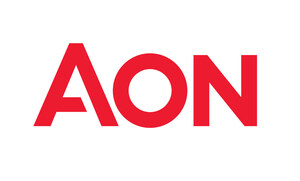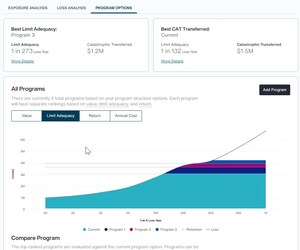LINCOLNSHIRE, Ill., Sept. 11, 2013 /PRNewswire/ -- Workers who plan to automatically default into the same health plan in which they were enrolled the previous year would be wise to rethink that strategy for the 2014 annual enrollment season, according to Aon Hewitt, the global talent, retirement and health solutions business of Aon plc (NYSE: AON). Employees can expect to see a number of changes to their health benefits driven by rising health costs and the Patient Protection and Affordable Care Act (PPACA). Aon Hewitt urges employees to do their homework this year to understand the impact of these changes and make informed benefits elections for them and their families.
(Logo: http://photos.prnewswire.com/prnh/20100719/AQ37264LOGO)
Some of the most notable changes employees may see include:
- A more expensive price tag – Aon Hewitt's research shows that most employers plan to subsidize employees' health coverage at the same percentage rate as last year. However, as health care costs increase overall, the amount of money employees will need to contribute out of their paychecks is continuing to climb. In addition, almost one in five employers has increased surcharges for adult dependents with access to coverage elsewhere.
- More options for coverage – Starting in 2014, all Americans will be required to have health care coverage or risk paying a penalty. Some employees—particularly those who are not offered health coverage through their employer—may wish to purchase individual coverage through the new state and federal marketplaces.
- A higher probability of being in a consumer-driven health plan – Consumer-driven health plans (CDHPs) continue to rise in popularity and have surpassed HMOs as the second most offered plans by employers. In fact, a growing number of employers are offering CDHPs as the only plan option. While just 10 percent of companies do so today, another 44 percent are considering it in the next three to five years[1].
- Programs that promote health awareness and education – With employers facing the impacts of rising health care costs and declining health of the population, employees can expect to see more employers offering programs that encourage them to take a more active role in managing their health. For example, 75 percent of employers offer health risk questionnaires (HRQs) and 71 percent offer biometric screenings such as blood pressure and cholesterol.
- More incentive opportunities for exhibiting healthy behaviors – Workers can also expect to see an increasing number of employers providing an incentive—either through a reward or a penalty—related to completion of programs such as HRQs and biometric screenings. Eighty-three percent of employers have such an incentive in place now[2].
- New eligibility rules – Employers may be making changes to rules that determine which employees are eligible for health coverage, particularly as they evaluate requirements of the "employer mandate" provision of PPACA (which was delayed until 2015). In addition, the recent Supreme Court decision that resulted in federal recognition of same-sex marriages may mean more dependents will now be eligible for benefits coverage.
"Employees typically spend very little time choosing their health benefits each year," said Craig Rosenberg, Aon Hewitt's Health & Welfare Benefits Administration practice leader. "This year, that can be a risky—and potentially costly—strategy. In some cases, not making an active decision during enrollment means employees could get defaulted into a health care plan that doesn't meet their needs—or even worse—leaves them and their families with no coverage at all. It's up to employees to read the fine print and take an active role in understanding if and how these changes may impact them."
Making the Most of the 2014 Benefits Enrollment Season
To ensure employees optimize their health care and other benefits choices, Aon Hewitt offers the following tips this enrollment season:
Participate in the enrollment process. Make sure you understand what's changing, when you need to make your choices, and what your employer is requiring of you. Most employers provide information and tools to help you understand your options and make your decisions.
Review coverage offered by your employer before making a decision about purchasing coverage through a marketplace in your state. You will hear a lot about these new marketplaces, including the availability of federal subsidies based on your income. In most cases, if your employer offers coverage that meets certain minimum coverage and cost levels, you will not be eligible for a subsidy in the marketplace. Make sure you take the time to understand the health plans your employer offers before declining this coverage to purchase insurance through the marketplace. It is important to note that most employers subsidize coverage they offer and allow you to pay for it on a pre-tax basis, which saves you money by lowering your taxable income. Coverage purchased through the marketplace, however, is not pre-tax. You can visit healthcare.gov to learn more about the marketplaces.
Evaluate whether a CDHP is right for you. CDHPs often have lower premiums, and a growing number of employers are making these plans more attractive options for you to consider. Of the companies that offer CDHPs, 44 percent subsidize premiums for these plans at a higher rate than other plan options. Many employers also couple these plans with Health Reimbursement Accounts (HRAs) or Health Savings Accounts (HSAs), which you can use to help pay for eligible out-of-pocket health care costs.
HSAs allow you to save money by contributing on a pre-tax basis, up to $3,300 in 2014 or $6,550 if you have family coverage, with no "use it or lose it" rule.
When evaluating CDHPs as an option, you should figure out how much you are likely to spend in out-of-pocket costs before you meet your deductible. Potentially higher deductibles for CDHPs, particularly those paired with HSAs, could mean that you will be spending more than you think. You should also factor in how much your employer will put into your HRA or whether they will make contributions to your HSA.
Reassess your and your dependents' health care needs. Reserve some time before open enrollment begins to take a fresh look at your health care needs for the year ahead and how you and your family have used health care in the past year. Consider how much you've spent out-of-pocket (e.g., deductibles, co-pays, and co-insurance), the number of doctor visits you typically make and the cost of regular prescription drugs. Most employers offer online tools and modelers to help you calculate your prior expenses and estimate your future health care needs.
If you are participating in a Health Care Flexible Spending Account (FSA), evaluate if your contribution is too little or too much, based on your actual and anticipated expenses. Remember that you must use any money in an FSA within the current year or risk losing it. If you plan to enroll in a CDHP with an HSA, ensure that you understand how your health care FSA is impacted as special rules apply. For example, the health care FSA may be limited to covering dental and vision care expenses.
Take advantage of opportunities to improve your health and lower your health costs. Most employers offer tools and programs such as health risk questionnaires and biometric screenings (e.g., blood pressure and cholesterol screenings) to help you understand more about your health. In fact, you may be able to take advantage of a financial incentive from your employer for doing so. These programs have the added benefit of providing you with better insight into your health risks so you can take action earlier.
Consider any supplemental benefits your employer may offer. Aon Hewitt's research shows that 28 percent of employers include access to voluntary supplemental coverage, such as critical illness and hospital indemnity insurance, as part of their annual enrollment process. Be sure to carefully review the available options and determine if certain voluntary coverage meets your needs. Often, this extra coverage is available at a lower cost through your employer than if you were to purchase it on your own.
Take a "health and wealth" view to spend your dollars wisely. As you assess your health plan options for 2014, it's important to look holistically at your health and financial wellbeing, including health care, income protection (e.g., life and disability insurance), and retirement planning. Does your spending reflect your needs and priorities? For example, if you aren't contributing to your 401(k) plan, now may be the time to start. Beginning to save earlier in your career helps to ensure you're on track to meet your long-term savings goals.
Sign up for News Alerts: http://aon.mediaroom.com/index.php?s=58
Follow Aon Hewitt on Twitter: @AonHewitt
About Aon Hewitt
Aon Hewitt empowers organizations and individuals to secure a better future through innovative talent, retirement and health solutions. We advise, design and execute a wide range of solutions that enable clients to cultivate talent to drive organizational and personal performance and growth, navigate retirement risk while providing new levels of financial security, and redefine health solutions for greater choice, affordability and wellness. Aon Hewitt is the global leader in human resource solutions, with over 30,000 professionals in 90 countries serving more than 20,000 clients worldwide. For more information on Aon Hewitt, please visit www.aonhewitt.com.
About Aon
Aon plc (NYSE:AON) is the leading global provider of risk management, insurance and reinsurance brokerage, and human resources solutions and outsourcing services. Through its more than 65,000 colleagues worldwide, Aon unites to empower results for clients in over 120 countries via innovative and effective risk and people solutions and through industry-leading global resources and technical expertise. Aon has been named repeatedly as the world's best broker, best insurance intermediary, reinsurance intermediary, captives manager and best employee benefits consulting firm by multiple industry sources. Visit www.aon.com for more information on Aon and www.aon.com/manchesterunited to learn about Aon's global partnership and shirt sponsorship with Manchester United.
[1] Aon Hewitt Health Care Survey, 2013
[2] Aon Hewitt Health Care Survey, 2013
Media Contacts:
Maurissa Kanter, 847-442-0952, [email protected]
Amy Ochalski, 847-771-4225, [email protected]
SOURCE Aon plc
WANT YOUR COMPANY'S NEWS FEATURED ON PRNEWSWIRE.COM?
Newsrooms &
Influencers
Digital Media
Outlets
Journalists
Opted In






Share this article